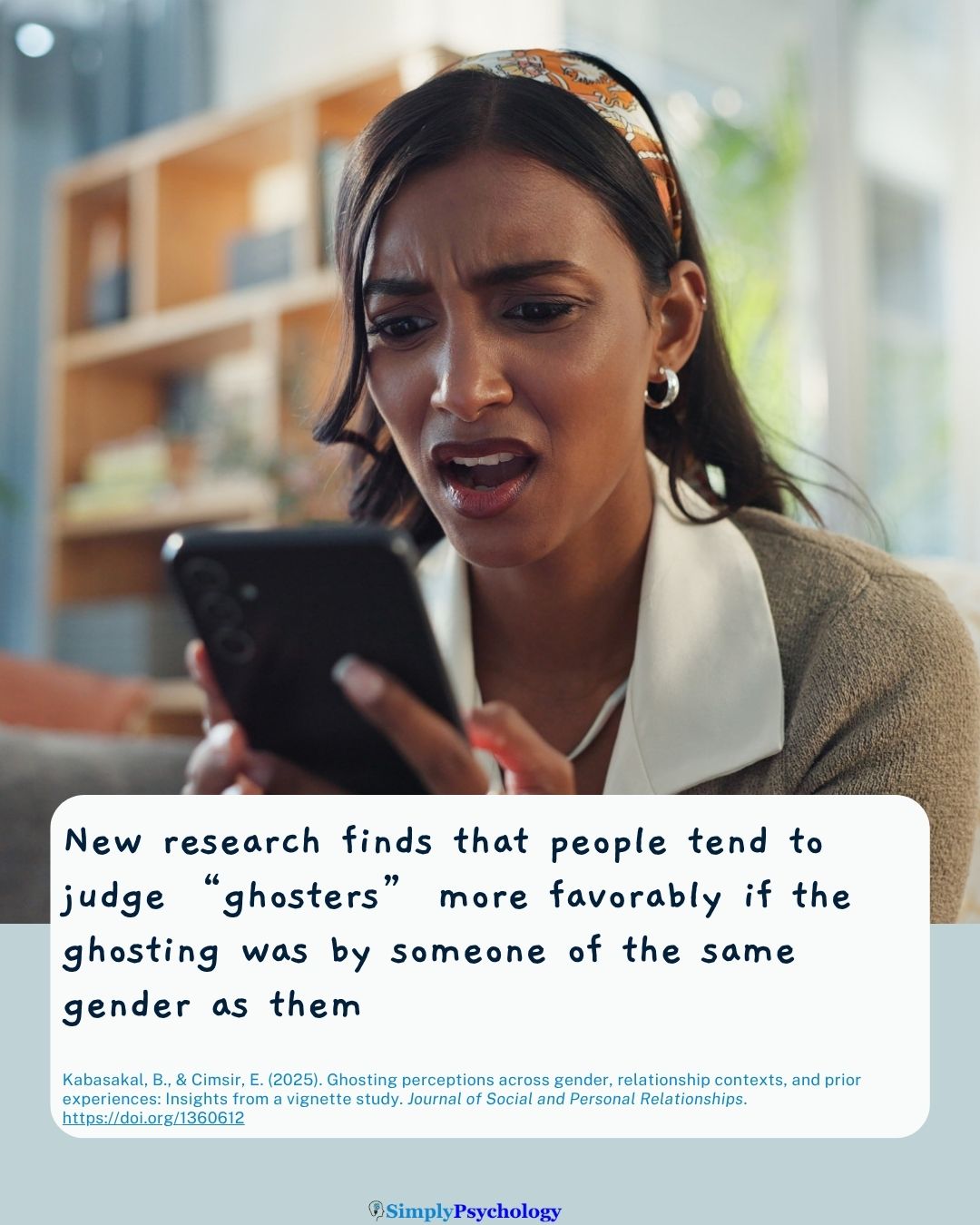Whether it’s a friend who vanishes without a word or a romantic partner who stops replying to texts, ghosting has become a widely recognized part of modern relationships.
Despite its growing presence in digital culture, how people view ghosting—and the people who do it—remains complex and influenced by social context.
A recent study offers new insights into how gender, relationship type, and personal experience shape our perceptions of this silent form of rejection.
Research by Betül Kabasakal and Elif Cimsir, published in the Journal of Social and Personal Relationships (2025), explores how individuals evaluate ghosting behavior and those who engage in it, focusing on gender dynamics, relationship context, and prior experience with ghosting.

The researchers found that ghosting was broadly perceived as inappropriate, regardless of whether it occurred in a friendship or a romantic relationship. However, people tended to judge ghosters more favorably when the ghoster was the same gender as themselves.
Ghosting, typically defined as abruptly cutting off communication without explanation, is often associated with dating and romantic breakups.
But research shows it also occurs in friendships, family dynamics, and even workplace interactions.
Studies suggest that those who are ghosted may experience emotional distress, including confusion, sadness, and a loss of closure.
Ghosters themselves can feel guilt or regret, though attitudes toward the behavior vary significantly.
To better understand these perceptions, Kabasakal and Cimsir conducted an experiment with 224 Turkish university students. Participants read one of four fictional scenarios describing a case of ghosting.
These vignettes varied by the gender of the ghoster (male or female) and the type of relationship (friendship or romantic). Participants, evenly split by gender, rated how appropriate the ghosting behavior was and how likable they found the person who did it.
The researchers discovered that ghosting was judged as equally inappropriate in both romantic and friendship contexts.
However, likability ratings varied. Male participants rated ghosters as more likable when the scenario involved a romantic relationship, while female participants did not show this difference.
Additionally, both male and female participants tended to rate ghosters of their own gender as more likable and their actions as more acceptable—a pattern suggesting in-group bias.
Interestingly, the gender of the ghoster did not directly influence perceptions across the board. Instead, it was the interaction between the ghoster’s and the participant’s gender that shaped how the ghosting was evaluated.
For example, female participants viewed female ghosters more positively than male ghosters, while male participants rated both genders similarly.
These findings suggest that social norms about gender and emotional responsibility may subtly influence how we interpret others’ relational behavior.
Prior experience with ghosting also played a role.
Participants who had previously ghosted someone were significantly more likely to see the behavior as appropriate and the ghoster as likable.
In contrast, those who had been ghosted did not show more negative views toward ghosting or ghosters.
This suggests that people who engage in ghosting may later rationalize the behavior, perhaps to reduce cognitive dissonance or maintain a positive self-image.
The results carry important implications for understanding how people manage interpersonal conflict and relationship breakdowns.
In a cultural context like Türkiye—where collectivist norms and traditional gender roles emphasize emotional accountability and modesty—these judgments are likely shaped not just by personal values but also by broader social expectations.
The finding that even ghosting in close friendships was viewed as inappropriate reflects shared expectations of emotional reciprocity and closure in meaningful relationships.
For everyday life, the research suggests that how people view ghosting may depend less on the act itself and more on who is doing it and who is observing.
Judging a ghoster more kindly when they share your gender may happen without conscious intent, reflecting underlying social affiliations or self-protective thinking.
At the same time, people may distinguish between disapproving of the behavior and still finding the person socially likable, especially in romantic contexts.
While the study sheds light on ghosting perceptions in a non-Western context, it has some limitations. It focused only on binary gender categories and heterosexual, cross-sex relationships.
It also used fictional scenarios, which may not fully capture the emotional nuance of real-life ghosting experiences.
Future research could explore perceptions of ghosting in more diverse relationship types, among individuals with varying gender identities, or in long-term versus short-term contexts.
Still, this study offers a nuanced look at a common yet often misunderstood social behavior.
As ghosting becomes a normalized form of disengagement, understanding the judgments people form about it—and the social factors that shape those judgments—can help clarify how we navigate modern relationships and the silent boundaries we draw within them.
Citation
Kabasakal, B., & Cimsir, E. (2025). Ghosting perceptions across gender, relationship contexts, and prior experiences: Insights from a vignette study. Journal of Social and Personal Relationships. https://doi.org/1360612



